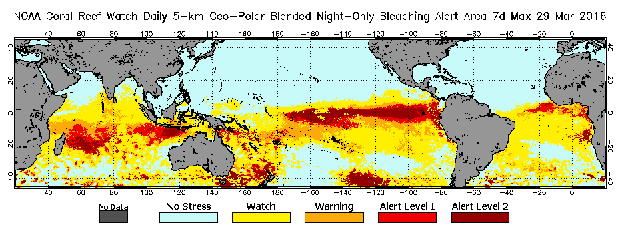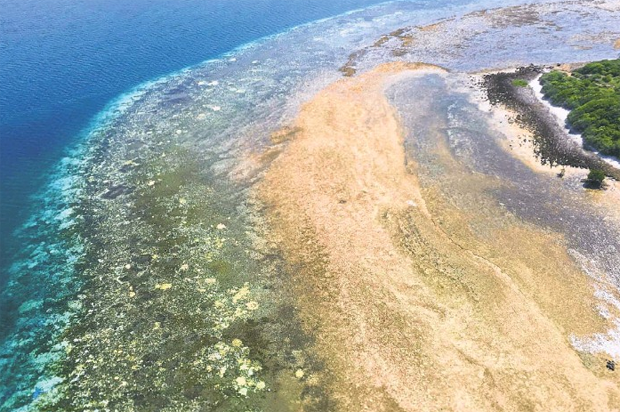Hardest-hit area includes some of Australia’s most remote and pristine coral. “ . . . Let’s be very clear, this is caused by global warming, and the main contributor is the mining and burning of coal . . .”
By Rob Taylor / Wall Street Journal / March 29, 2016
CANBERRA, Australia
[dropcap]A[/dropcap]n underwater heat wave is devastating huge swaths of Australia’s Great Barrier Reef, marine researchers have found.
An aerial survey of the chain of 3,000 coral outcrops—a Unesco World Heritage site and the only living system visible from space—found 95% of its northern area, roughly half of the reef’s length, had been hit by a bleaching event that began six months ago. Damage to the southern area is still being assessed.
“This has been the saddest research trip of my life,” said Terry Hughes, a professor at Australia’s James Cook University and researcher in coral bleaching. “Almost without exception, every reef we flew across showed consistently high levels of bleaching, from the reef slope right up onto the top of the reef.”
Coral bleaching occurs when sea temperatures rise enough to kill the tiny algae that give corals their vibrant color. It can be a matter of just 1 degree Celsius, about 2 degrees Fahrenheit. Without the algae, the white skeleton of the underlying host coral is revealed and the organism begins to starve.

NOAA compiled data shows the effects of global warming compounded by El Nino. NOAA satellite image March 29, 2016.
Bleaching has an outsize impact of the health of the oceans, scientists say, as teeming coral outcrops—though they cover just a small part of the ocean floor—support a quarter of all marine life.
The current bleaching event is global, the third since 1998. The first killed 16% of the world’s coral banks, according to the U.S. National Oceanic and Atmospheric Administration. The second was in 2002. There have also been local bleaching events, such as one in 2005 that wiped out half of the U.S. coral reefs in the Caribbean Sea.
The current event was declared by NOAA in October after a bleaching event in Hawaii. The World Meteorological Organization listed last year as the hottest on record.
Prof. Hughes said the hardest-hit area of the Great Barrier Reef stretches from the Pacific Island nation of Papua New Guinea down to Cairns in northeastern Australia, where welling hot water had been evident for months. Only four individual reef outcrops in that area remained unaffected, according to the results of the survey released Tuesday.
Even more concerning, he said, is that the area now being devastated contained some of Australia’s most pristine and remote coral— Continue reading . . .
NOTE: Featured Image: Aerial view of bleached coral reefs in the northern part of Austrailia’s Great Barrier Reef. An estimated 95% of the northern reef has been destroyed (about 1/2 of entire reef). Image credit unidentified.


